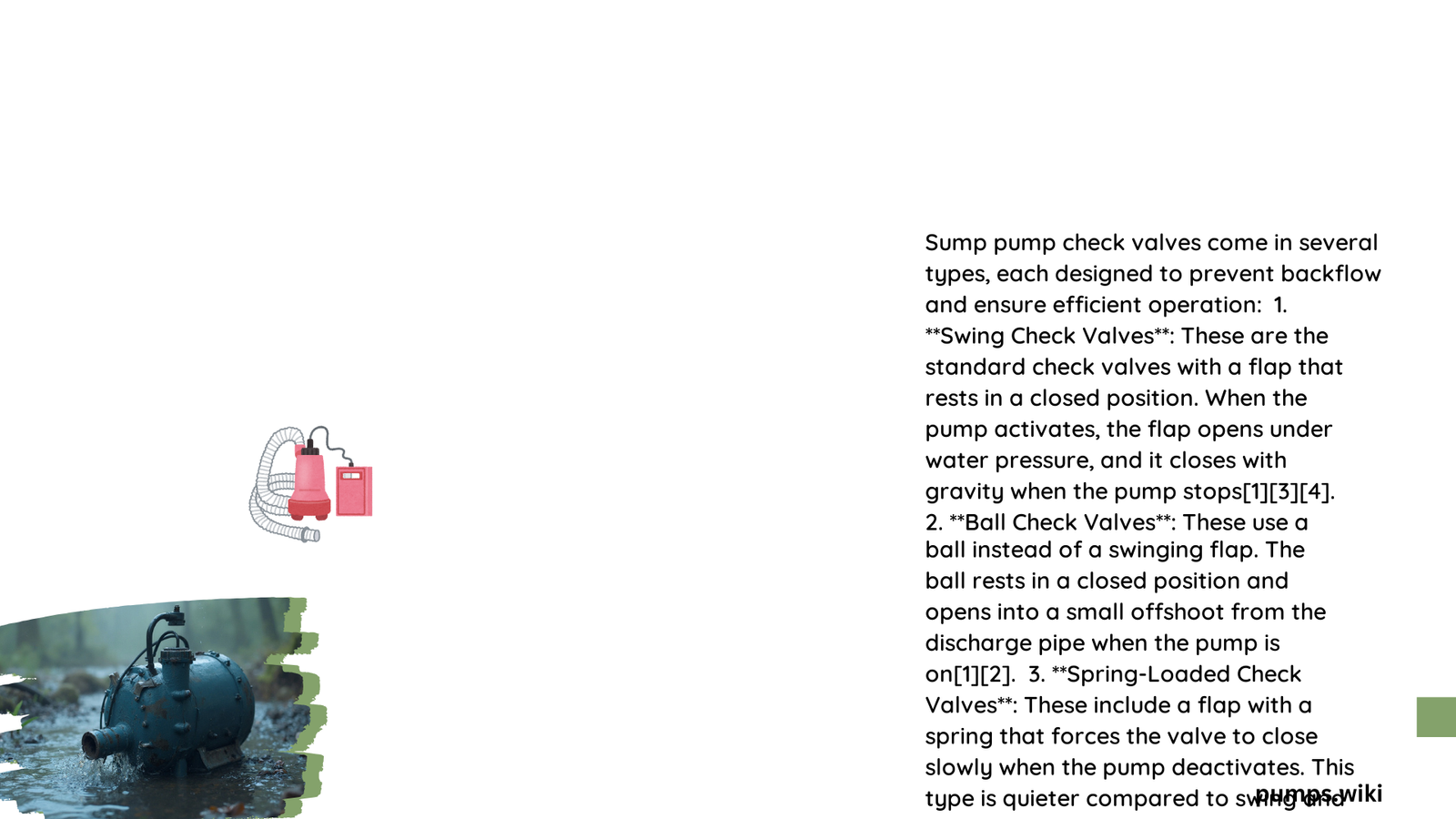Sump pump check valve types are critical components in preventing water backflow and ensuring efficient drainage systems. These specialized valves come in multiple designs, each offering unique advantages for residential and commercial applications. Understanding their operational mechanisms, material compositions, and installation requirements can help homeowners and professionals select the most appropriate solution for water management challenges.
What Are Sump Pump Check Valve Types?
Sump pump check valves are mechanical devices designed to prevent water from flowing backward into the sump pit after the pump stops operating. They play a crucial role in maintaining system efficiency and preventing potential water damage.
Primary Sump Pump Check Valve Categories
| Valve Type | Key Characteristics | Best Applications |
|---|---|---|
| Swing Check Valve | Gravity-operated flap | Residential settings |
| Ball Check Valve | Ball mechanism | Industrial applications |
| Spring-Loaded Check Valve | Controlled closure | Noise-sensitive environments |
How Do Swing Check Valves Operate?

Swing check valves utilize a simple yet effective mechanism:
- Mechanism: Flap opens during pump activation
- Closure: Gravity-driven return to closed position
- Advantages:
- Cost-effective
- Simple installation
- Compatible with battery backup systems
- Limitations:
- Potential noise during closure
- Less precise sealing compared to other types
What Makes Ball Check Valves Unique?
Ball check valves offer distinctive operational characteristics:
- Functional Principle: Small ball moves within a specialized discharge pipe section
- Movement: Ball shifts to allow water flow during pumping
- Ideal For:
- Handling non-liquid materials
- Commercial and industrial environments
- Performance Considerations:
- More complex mechanism
- Higher durability in challenging environments
Why Choose Spring-Loaded Check Valves?
Spring-loaded check valves provide advanced performance features:
- Operational Mechanism: Integrated spring controls valve closure
- Benefits:
- Reduced water hammer effects
- Minimal operational noise
- Smooth valve closure
- Recommended Applications:
- Residential settings
- Noise-sensitive environments
What Materials Are Used in Check Valve Construction?
Material Comparison
| Material | Durability | Corrosion Resistance | Temperature Tolerance |
|---|---|---|---|
| PVC | Moderate | Good | Up to 140°F |
| Brass | High | Excellent | Up to 200°F |
| Stainless Steel | Very High | Superior | -200°F to 1000°F |
How Should Check Valves Be Installed?
Installation Best Practices
- Positioning: 8-12 inches above floor level
- Required Tools:
- Adjustable wrench
- Pipe cutters
- Pipe glue
- Clamps
- Critical Steps:
- Disconnect power
- Cut discharge pipe
- Install valve
- Test functionality
What Maintenance Do Check Valves Require?
Maintenance Recommendations
- Inspection Frequency: Every 6-12 months
- Cleaning Process:
- Visual examination
- Remove debris
- Check for corrosion
- Warning Signs:
- Unusual noises
- Water leakage
- Visible corrosion
Conclusion
Selecting the appropriate sump pump check valve type depends on specific environmental conditions, budget, and performance requirements. Professional consultation can help determine the most suitable solution.
